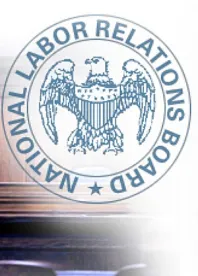Trying to keep track of the “tests” that various government agencies use to determine whether an individual is (or is not) an independent contractor?
Don’t ignore the National Labor Relations Board’s latest. It was applied recently in Sisters’Camelot, 363 NLRB No. 13 (Sept. 25, 2015).
Whether individuals performing services for an entity are employees, who are protected by the National Labor Relations Act, or independent contractors, who are not, is determined by 11 well-established factors set forth in the Restatement (Second) of Agency § 220 (1958), the NLRB held 2014. They are:
-
Extent of control by the employer
-
Whether or not the individual is engaged in a distinct occupation or business
-
Whether the work is usually done under the direction of the employer or by a specialist without supervision
-
Skill required in the occupation
-
Who provides the supplies, tools, and place of work
-
Length of time for which individual is employed
-
Method of payment
-
Whether or not the work is part of the regular business of the employer
-
Whether or not the parties believe they are creating an independent contractor relationship
-
Whether the principal is or is not in the business
-
Whether the evidence tends to show that the individual is, in fact, rendering services as an independent business
Unfortunately, the Board has provided little guidance on how to analyze the facts relevant to each of these factors. Rather, it has opted for opacity, saying only that the relevance of each factor “will depend upon the factual circumstances of the particular case.”
The Board, therefore, may have ample opportunity to second-guess its administrative law judges’ decisions, emphasizing the factors that support a desired outcome and minimizing those that do not, favoring findings of employee status in many (perhaps most) instances. Which brings us to Sisters’ Camelot.
There, applying its 11-factor test to reverse its ALJ, the Board concluded the employer improperly treated canvassers as independent contractors. The Board’s conclusions supporting its finding of employee status (and NLRA coverage) were somewhat surprising, at least as applied to four of the more significant factors:
-
Control: The Board held the extent of the putative employer’s control supported a finding of employee status. This was true although the canvassers were not required to report to work on any given day or even to let anyone know if they were going to show up to work. That fact, according to the Board, was not determinative. What wasdeterminative, in its view, was the level of control the employer had if a canvasser showed up to work. The employer decided on a pickup and drop-off time, transported canvassers to the locations to be canvassed, and determined which canvassers would cover which location.
-
Supervision: Canvassers were not subject to supervision while working, yet the Board discounted this by holding, “the nature of the work makes such in-person supervision highly impractical.” The Board rationalized its decision by stating the documentation required of canvassers provided another means of supervision and of assessing performance.
-
Length of time for which individual is employed: Nothing in the decision addressed the canvassers’ average duration of alleged employment with Sisters’ This appeared to be highly intermittent work: people worked as canvassers when they wanted to earn some extra money. Some worked for a day or two and never worked again. Yet, because thepossibility existed that some canvassers might work for years, the Board found this factor “inconclusive.”
-
Freedom to work for others: One of the touchstone tests for independent contractor status is an individual’s ability to take on work for other organizations. The canvassers were free to do so, and were even free to solicit the same neighborhoods for other organizations when they were not canvassing for Sisters’ Despite this, the Board held that “the ability to work for multiple employers does not make an individual an independent contractor.”
While the Board’s application of the 11 factors in Sisters’ Camelot may surprise some, its ultimate conclusion that canvassers were employees covered by the Act is predictable. The Board’s recent decisions underscore that the NLRB is purposefully making it more difficult than ever to create an independent contractor relationship. Therefore, it is more important than ever for employers to evaluate their organizations’ independent contractor agreements and practices carefully in light of the 11 Restatement factors and these decisions.
For a detailed analysis of the Board’s review of all 11 factors in Sisters’ Camelot, click here.







 />i
/>i

